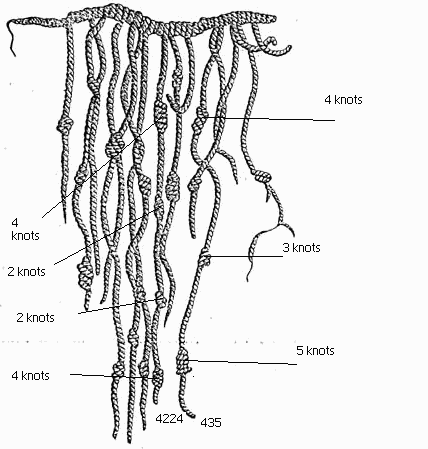Quipu : Incan recording system
As Incan people never invented writing script, they used something for calculation ,which is- Quipu, as you see in the picture. Boys spent at least a year in School just on quipu. They learned how to interpret quipu. A quipu consisted of a main chord which was about a yard long. Smaller chords hung from this chord. Each chord has one or many knots at different vertical positions. With the help of knots and color they could store any record of data. So what they recorded? Number of people in a village, no of males, females, no of families, no of total villages- actually they could store data of everything. Even they stored data of crops grown every year. They used different colors for different strings to identify different items. Like if they wanted to count gold and silver, they would use gold and silver colored strings. Hundreds of such quipus enabled the Incan government to collect all the data to run the government.

When a boy finished his training on quipu, he became a quipu interpreter. Just looking at quipu, a quipu interpreter could tell all data that was stored in that quipu. Exceptionally efficient boys became quipu recorders and spent many years mastering the records of the entire kingdom.
The acountants of the Inca Empire were called uipucamayocs. They could create and deciphered the quipu knots.A quipucamayocs was capable of performing simple mathematical calculations such as adding, subtracting, multiplying, and dividing information for the indigenous people.
So you see quipus were the main sources of all records in Incan government. Since Incan failed to develop the writing scripts, quipus helped them to keep records. So it was not used for calculation pueposes only, they used it to keep the records and events of the history. Using quipu they passed history to the next generation.
Go back to " Inca society"
Go back to home page